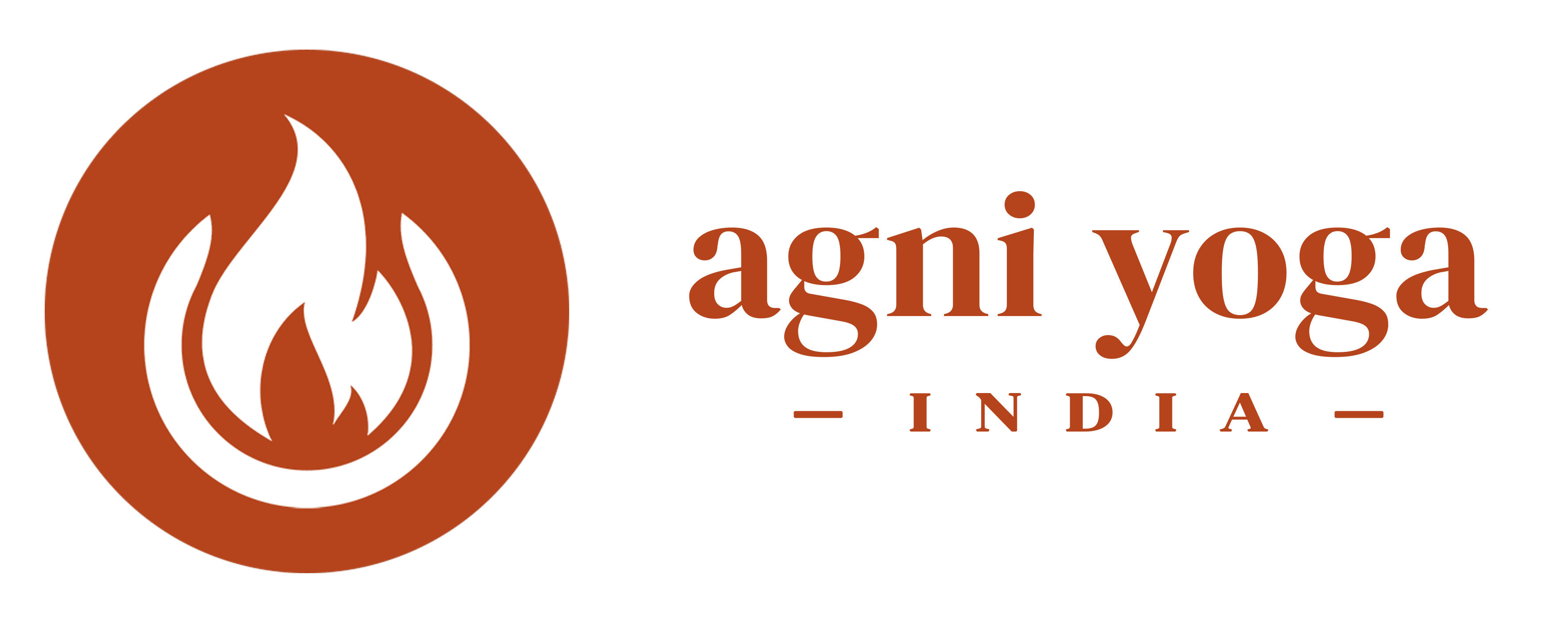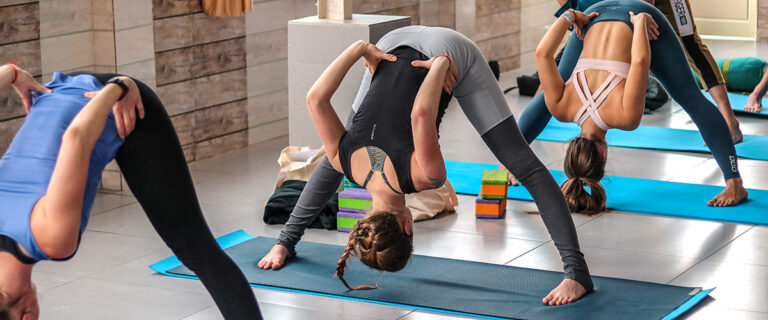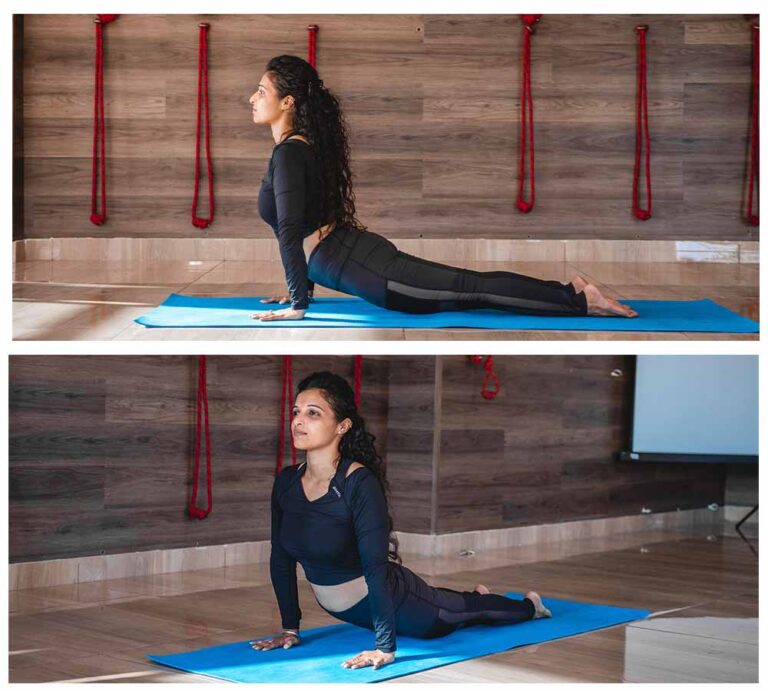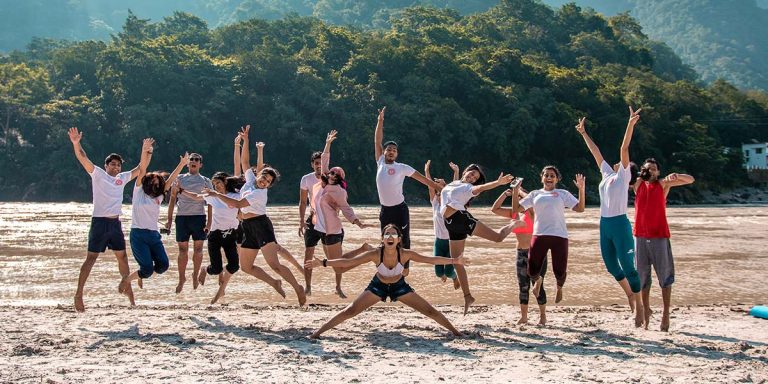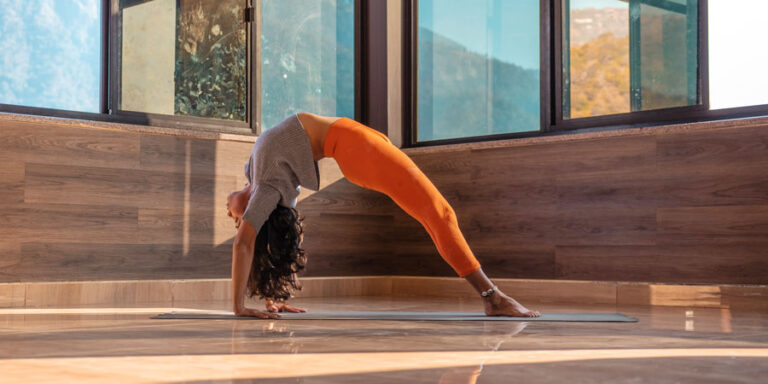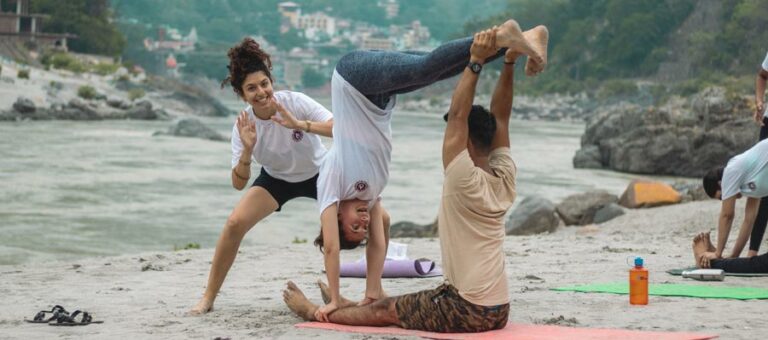Chakrasana Yoga – Benefits, Procedure, And Precautions
In Yogic Philosophy, “Chakra” refers to energy centers within the body. Chakrasana is believed to activate and balance these energy centers, especially the Heart Chakra, which is associated with love, compassion, and emotional balance. The pose opens the chest and heart area, allowing energy to flow freely through these centers.
Chakrasana is a deep backbend that symbolizes transformation and liberation. It requires flexibility and strength, both physically and mentally, suggesting the ability to overcome obstacles and limitations. Practicing Chakrasana is a symbolic journey towards openness and expansion in body and spirit.
Core Benefits of Chakrasana
Chakrasana is an advanced back-bending posture that offers a range of physical and mental benefits. It helps to stretch and strengthen the spine and improve overall spine health. Chakrasan helps in engaging abdominal muscles which supports the core stability.
- Opens up the chest and stretching the shoulders helps to improve posture and relieves tension in the upper body.
- The pose stimulates the abdominal organs which can aid in digestion and boost metabolism.
- The backbend stimulates the nervous system and can help uplift mood and increase energy levels.
- Chakrasan helps to enhance blood flow, which benefits cardiovascular health and promotes better oxygenation of the body.
- Engages the quadriceps, hamstrings, and glutes, providing strength to the lower body.
Step-by-Step Procedure to Perform Chakrasana
Begin with some warm-up exercises to prepare your body for the pose. Focus on the postures that open up the chest, shoulders, and hips i.e. Marjariasan (Cat-cow pose), Bhujangasana (Cobra pose), Salabhasan (Locust pose), Setu Bandhasana (Bridge pose).
For Chakrasana, Start by lying on your back with your knees bent and feet flat on the floor, feet hip-width apart. Place your arms next to your thighs with palms facing downwards.
- Bend your elbows and place your hands beside your ears, fingers pointing towards your shoulders. Your elbows should be shoulder-width apart.
- Press your feet firmly on the ground and engage your glutes by tucking in your pelvic bone. Lift your hips off the floor and come into a variation of bridge pose.
- With your hips lifted, press your palms into the mat and begin to straighten your arms. You may need to adjust your hand placement slightly to find balance. Your fingers should be pointing toward your shoulders.
- Continue pressing through your hands and feet to lift your chest and head off the floor. Your body should form a bridge shape, with your weight distributed evenly between your hands and feet.
- As you lift, try to open up your chest towards the ceiling, and allow your head to gently drop back. Your legs should remain active and engaged.
- Stay in the pose for 10-15 seconds, or as long as you feel comfortable, try to breathe and focus on your alignment.
- To come out of the pose, gently lower your body back to the floor. Start by bending your arms and legs to lower your back and hips. Rest with your knees drawn towards your chest.
- Perform counter postures like Balasan (Child’s pose) to stretch out your back and relax after the pose.
Essential Precautions and Contraindications
- Listen to your body and avoid pushing yourself too hard. If you feel pain or discomfort, come out of the pose.
- There is no harm in using props. For beginners, it is hardly recommended to go with baby steps and the use of props correctly.
- Ensure your hands and feet are properly aligned to avoid straining your shoulders or lower back.
- Preferably, practice under the supervision of a qualified yoga instructor to ensure proper technique and alignment.
- If you have any shoulder, neck, or back injury consult with a teacher or a professional before attempting this pose.
- Avoid this pose if you are pregnant or condition which can aggravate back pain.
- Those with high or low blood pressure should avoid this pose as it can affect circulation and blood flow.
- People with cardiovascular issues should consult with a healthcare provider before attempting this pose, as it can put extra stress on the heart.
- People with glaucoma or other eye conditions should avoid the pose or perform it under supervision.
Practicing slowly and regularly can help you increase the mobility, flexibility, and strength it requires to perform the posture. Always listen to your body and modify accordingly.
Conclusion
The wheel pose can have both positive and challenging effects on your cardiovascular health. It involves lifting the chest and opening the heart, which can enhance blood flow throughout the body. This increased circulation can help improve overall cardiovascular health.
Performing backbends like Chakrasan can invigorate the body and mind, potentially improving overall energy levels and vitality. By increasing the heart rate, Chakrasana can stimulate the cardiovascular system which may contribute to better heart health over time.
Chakrasana or Wheel pose, is an invigorating yoga asana that offers numerous benefits, including enhanced flexibility, strength, and vitality. It stretches and strengthens the entire body, particularly the back, chest, and hips. By practicing with proper alignment, incorporating modifications, and paying attention to your body’s signals, you can safely enjoy the benefits of Chakrasana while minimizing risks.
FAQs
- How long should I hold Chakrasana?
Hold Chakrasana for 15–30 seconds initially, and gradually increase the duration as your flexibility and strength improve. Focus on steady breathing throughout.
- What muscles are worked in Chakrasana?
Chakrasana works the core, back, arms, and legs. It strengthens the spine, glutes, shoulders, and wrists, while also stretching the chest, hips, and abdomen
- Can Chakrasana help improve posture?
Yes, Chakrasana can significantly improve posture by strengthening the back muscles, promoting spinal alignment, and opening the chest, helping to counteract slouching.
- How do I safely get out of Chakrasana?
To exit Chakrasana, slowly lower your back and hips down to the mat, one vertebra at a time. Bend your knees, and bring your arms down, gently releasing the stretch. Rest in a neutral position like Child’s Pose (Balasana) to relax
- Can Chakrasana help with stress relief?
Yes, Chakrasana can help relieve stress by opening the chest, promoting emotional release, and activating the parasympathetic nervous system for relaxation. It can also improve mood and create a sense of emotional openness.
